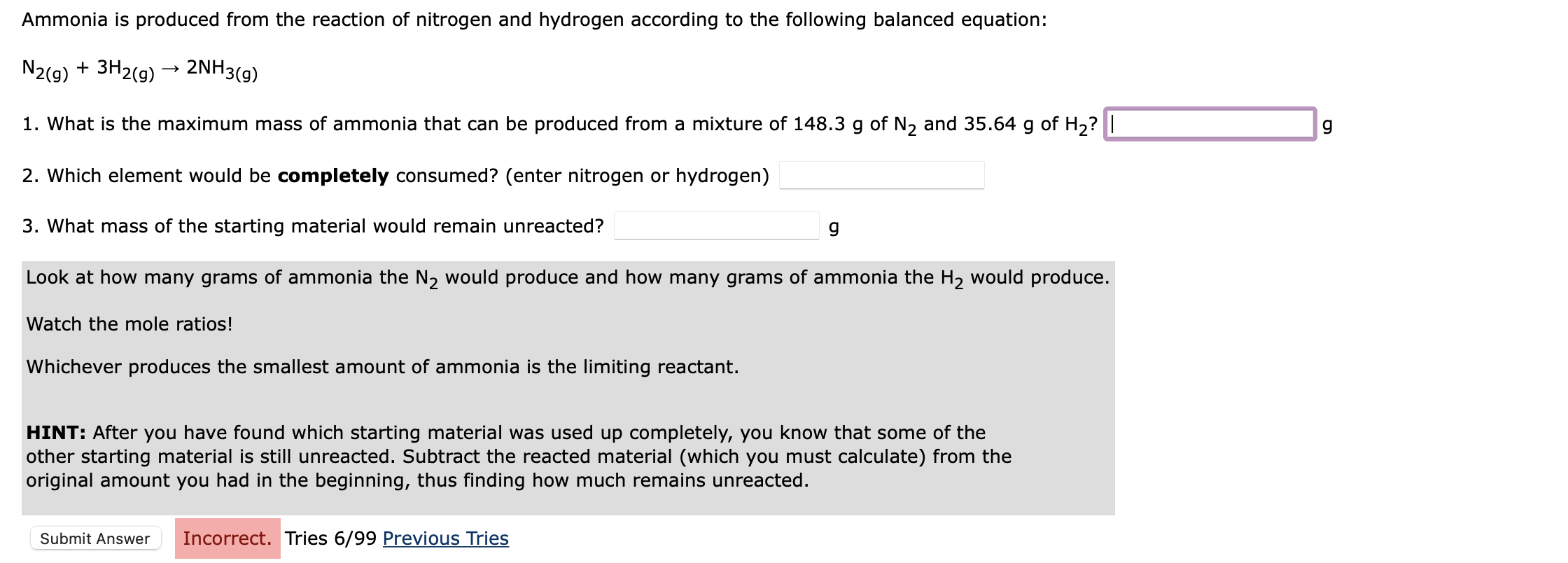Home /
Expert Answers /
Chemistry /
ammonia-is-produced-from-the-reaction-of-nitrogen-and-hydrogen-according-to-the-following-balanced-pa498
(Solved): Ammonia is produced from the reaction of nitrogen and hydrogen according to the following balanced ...
Ammonia is produced from the reaction of nitrogen and hydrogen according to the following balanced equation: \[ \mathrm{N}_{2(\mathrm{~g})}+3 \mathrm{H}_{2(\mathrm{~g})} \rightarrow 2 \mathrm{NH}_{3(\mathrm{~g})} \] 1. What is the maximum mass of ammonia that can be produced from a mixture of \( 148.3 \mathrm{~g} \) of \( \mathrm{N}_{2} \) and \( 35.64 \mathrm{~g} \) of \( \mathrm{H}_{2} \) ? 2. Which element would be completely consumed? (enter nitrogen or hydrogen) 3. What mass of the starting material would remain unreacted? Look at how many grams of ammonia the \( \mathrm{N}_{2} \) would produce and how many grams of ammonia the \( \mathrm{H}_{2} \) would produce. Watch the mole ratios! Whichever produces the smallest amount of ammonia is the limiting reactant. HINT: After you have found which starting material was used up completely, you know that some of the other starting material is still unreacted. Subtract the reacted material (which you must calculate) from the original amount you had in the beginning, thus finding how much remains unreacted.
